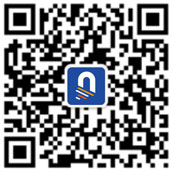Unification的創始人Neyma Jahan是IoT和互聯網領域的連續創業者,其在2017年投身區塊鏈,Unification在去年下半年獲得了海外知名基金Yellow Captial 和Gems Captial 的投資和孵化。相比很多還處於概念階段的公鏈,Unification已經與歐洲和拉美國家的很多企業和政府合作開發應用。其中不乏政府準備利用其底層技術開發穩定幣。
區塊鏈解決了海外企業和政府的哪些痛點?如何驅動公私混合區塊鏈模型大規模被企業、政府等機構應用? 3月12日晚間,Neyma Jahan做客PANews,為大家解鎖海外傳統行業擁抱區塊鏈的N種姿勢。
Speaker:
Neyma Jahan, Founer & CEO of Unification
With a lucrative background in direct response marketing, Neyma Jahan moved into the IoT space in 2013. In 2017 he stepped down as CEO and made the full transition to the blockchain space, launching the Unification Foundation.

對話實錄AMA Recap:
PANews:您是連續創業者,之前在物聯網領域有著豐富的經驗,為什麼會想到轉而進入區塊鏈領域創業呢?有什麼樣的契機?
l know that you are a serial entrepreneur, and has extensive experience in the IoT. then what makes you starting your business in blockchain sector? What inspired you to do so?
Neyma:We began the project with the vision for data interoperability- meaning that in governments and enterprises, there are so many different data silos that cannot communicate with each other- So for instance your government records are kept in a separate location than your health records and each of these data points is owned by the holder- and not by the end consumer- we originally developed out Unification to be a 2nd layer for data- interoperability- which is the true strength of the blockchain/ As we developed this out further - we understood there was a main problem that all 1st layer native blockchain solutions had the same problem -that was they all operated on a speculative coin. So say you have your identity on the Blockchain - but depending on which KOL spoke about the project today maybe the price of the coin went up and then this made it cost twice as much to access your data/ identity.
This was not acceptable so from there we expanded further to offer a 1st layer public/private blockchain that is not dependant on speculation coin price.
我們開始Unification這個項目的願景是實現數據互用——在政府和企業中,有很多不同的數據庫,彼此卻不能通用。例如,你的政府記錄和你的健康記錄分別被獨立保存,並且這些數據的擁有者並不是你本人,而是數據的持有者。我們最初開發Unification的目的是想建立一個數據的layer2,實現互用性,這才是區塊鏈真正的優勢所在。而隨著更進一步的開發與探索,我們明白到一個主要的痛點——第一代區塊鏈解決方案也有著同樣的問題——它們開發所基於的代幣幣價投機性太大。假設區塊鏈上有你的身份信息,但是如果有個KOL談論了這個項目,其幣價突然上漲,可能你訪問自己身份數據的成本就會增加一倍。
這樣的情況讓人很難接受,所以我們進一步發展了這個願景,即提供一個底層的公私混合區塊鏈,並且其代幣並不具備投機性。
PANews:聽說您正在香港參加區塊鏈週,也作為嘉賓分享了傳統企業、政府機構應用區塊鏈的案例。中國的區塊鏈行業一直在講“脫虛向實”和“落地應用”,最近摩根大通也在區塊鏈方面有應用,除了金融行業,還有哪些領域可以很好的應用區塊鏈技術?您可以分享幾個海外的應用案例嗎?
Chinese investors are always interested in projects which having real-life use cases, In addition, even JP Morgan has made some movements, planning to get a slice of cake from blockchain industry. Expect to the JPM case in financial sector, in what other areas do you think the blockchain technology could be applied? Could you please share some overseas Unification cases of blockchain application with us?
Neyma:Blockchain is always useful to bring Trust to an inhernetly trustless enviroment. Simply put - it is to force people to be honest with each other. For instance one case we are developing in Latin America is to combat insurance fraud. in this country there is a major issue with patients and doctors double billing multiple insurance companies for the same treatment and collecting the money. We are getting all the major insurance companies to come together and maintain a Workchain together where each patient/doctor is assigned a unique identity and their billing and conditions are tracked. in this way all of the trustless entities have a way to trust each other through distributed ledger technology.
區塊鏈有助於為固有缺乏信任的環境注入信任。簡單地說,就是迫使人們彼此誠實。例如,我們正在的開發的拉丁美洲的一個案例——打擊保險欺詐。在這個國家,有一個主要的問題,病人和醫生為同一種治療向多家保險公司開出雙倍的賬單,以謀求保費。我們正在試圖聯合主要的保險公司,共同運作一個Workchain,在這個Workchain,每個病人/醫生都被賦予一個獨一無二的身份,且他們的賬單和病情都會被追踪。如此,所有不可信的實體都可以通過分佈式賬本技術彼此信任。
Another use case we are developing is in competitve motorsports. So in this industry - technical compliance checks pre and post race for the vehicles is very important to combat against cheating. by having each team maintain a node on the semi-private blockchain - then mechanical ratings are forever stored and cannot be covertly altered. there are many more use cases, but these are the first two that come to mind.
另一個正在開發中的案例是關於競技賽車。在這個行業中,賽前和賽后的車輛技術合規性檢查對於打擊舞弊行為是非常重要的。通過讓每個團隊在半私有區塊鏈上維護一個節點,那麼機械評級將永遠存儲,並且不能被暗中篡改。其他還有許多應用案例,這是我最先想到的兩個。
PANews:我了解到企業主要是在Workchain上搭建應用,Unification被清晰的分為主鏈(Mainchain)和Workchain ,他們分別要承擔怎樣的角色呢? Workchain與側鏈/協議層有什麼區別呢?
We've learnt that enterprises are building applications on the Workchain. We already know that unification brings two concept: Mainchain and Workchain, but what's the difference between them? And how do you tell the difference among Workchain, Sidechain, and Protocol?
Neyma:good question - Mainchain is a fully public blockchain that uses DSG (distributed stake governance) it is 100% public and immutable and validated by the community. We maintain no special ownership of Mainchain.
這個問題問地非常好。主鍊是一條完全公開的區塊鏈,它採用DSG(分佈式權益治理)模式,並且是100%公開的,不可變的,並由社區驗證。我們對主鏈沒有特殊的所有權。
Workchain is a version of a sidechain that allows semi-private deployment amoung a community. for instance in the earlier example for the motorsports - say there are 12 teams in a racing circuit - we would for instance create a workchain with 13 nodes- one for each team and one for the governing body of the sport. Then this Workchain will produce blocks in this semi-private environment and send the headers of these blocks to the PUBLIC Mainchain. once recorded on the mainchain - this promises that they cannot be altered by anybody and it goes on the public permanent record
(i should note that depending on the configuration -that actual data can remain private and sometimes it is just an encrypted hash of data that is passed to mainchain)
工作鍊是側鏈的一種形式,其允許用戶在社區中進行半私有部署。例如,在前面提到的賽車運動示例中——假設在一個賽車賽道中有12個團隊——我們將創建一個包含13個節點的Workchain——每個團隊一個節點,運動管理機構一個節點。之後,該Workchain將在這個半私有環境中生產區塊,並將區塊頭髮送至主鏈上。一旦被記錄在主鏈上——它們將不能被任意篡改,並且會被永久記錄。
(我需要指出,根據結構配置的不同,有時實際數據可以保持私有性,有時它只是傳遞給主鏈的加密數據散列。)
PANews:我了解到,很多企業在引用區塊鏈技術的時候會擔心代幣炒作,網絡擁堵等問題,unification是如何解決這一問題呢?
We know that many enterprises choose to do Dapps when they decide to adopting blockchain technology, but they have met many problems such as token speculation, congestion of the public chain and so on. How does Unification solve such kind of problems?
Neyma:We think the blockchain industry has an illness because many companies are so focused on the value of the coin price , that they actually forget practical usefulness. Very clearly the customer of Unification is the enterprise or government and not the coin speculator.
我們認為區塊鏈行業目前普遍存在這個問題,因為許多公司過於關注幣價,以至於忘記了它的實際用途。很明顯,Unification的客戶是企業或政府,而不是代幣投機者。
Because of this instead of building a “DAPP” on a public network -a developer will deploy a Workchain - this is mostly private and allows users of the workchain to transact without fees. For example we have a Electronic health records Workchain in Brazil which has 2 million users. Imagine how impossible this will be if 2 million users in brazil had to HOLD Ethereum and use it to access their health records. It just wouldn't work.
正因為如此,不同於在公鏈上構建一個“DAPP”,開發人員則是部署一個Workchain(且主要是私有鏈),並且允許Workchain的用戶免費交易。例如,我們在巴西的一個電子健康記錄Workchain,擁有200萬用戶。想像一下,如果這200萬巴西的用戶只能通過持有eth,並使用其訪問他們的健康記錄,這根本行不通。
instead we make it so that the end users don't have fees and instead the masters of the Workchain pay a small fee in UND everytime they send a finished block to public Mainchain. This makes it so that enterprises can operate in a fixed fee and predictable way that allows for unlimited horizontal scaling
不同的是,像我們現在的做法,終端用戶無需支付費用,而Workchain擁有者在向主鏈發送末端區塊時只需支付少量費用即可。這使得企業能夠以固定的費用和可預測的方式運營,同時保證無限的水平擴展。
PANews:Unification的治理模式是怎樣的?主鏈的節點會有怎樣的獎勵,將來會進行節點競選嗎?
What is the Governance model of Unification? What kind of reward will the nodes of the mainchain get, and will there be a “node vote” in the future?
Neyma:We use a system for Mainchain called DSG or Distributed Stake Governance. It is designed in a way that users of the system are inherently vested in its success. Simply put, every 72 hours a “vote” is held and the top 96 wallets that place UND in stake will receive a medallion that allows them to validate blocks.
我們在主鏈上建立了一個叫做DSG(分佈式權益治理)的系統。用戶可以基於這一系統獲取授權。簡單地說,每72小時會有一次投票,排名前96並持有UND的錢包會得到用以激活區塊的獎章。
Being a validator allows them to collect network tax and also to receive block rewards. You can check the white paper- but I think in the first year there is 8 % inflation and then it reduces to smaller amounts year by year as the token circulates into utility. This system was designed with the help of numerous economics experts to ensure proper vesting within the system.
作為驗證者,用戶可以收取網絡稅並獲取區塊獎勵。具體可參見我們的白皮書——不過我認為在第一年會出現8%的通脹,而隨著代幣逐步進入應用階段,相信這個通脹率會隨之降低。為確保授權不出問題,這一系統由眾多經濟學專家參與設計。
The 96 Validators operate on PBFT consensus which requires ⅔ of agreement to make a decision.
96個驗證者將基於PBFT(Practical Byzantine Fault Tolerance,拜占庭容錯)共識運作,只有達成一致才能做出決策。
PANews:您之前講了很多應用案例,其中也有政府機構相關的,現在越來越多的政府將區塊鏈應用到管理中,但是政府在選擇技術合作夥伴的時候無疑會比較嚴格,你們對吸引或是說服服政府機構合作方面,有什麼自己的心得麼?
I notice that there are some government-relevant projects by Unification. And we know that more and more governments are trying to adopt blockchain technology into their governance, but as we know when a government select a partner, seems the standards will be stricter than enterprises . Do you have any tips on how to attract or convince government organizations to cooperate?
Neyma:The advice I give always is to understand the needs of your customer and why they would need your product. In governments case- it is 2 reasons - 1 is to de-silo data- so to get it in a single place 2 - and more importantly is to combat fraud and corruption. for instance we are in a bid for a government bank to issue a stable coin on a Workchain - this will be used to pay government contractors and redeemable at the bank. This way all of the money can be tracked everywhere that it goes. This is an obvious solution. So again my best answer is to understand the needs of your customer.
For now, education and outreach is the key - we have to show that blockchain is not just about "coins" but really about technology.
我建議大家一定要了解你的客戶的需求,以及他們為什麼需要你的產品。就政府方面來說,有兩點:1,是不要把數據存儲在一個獨立的地方(de-silo data);2,也是比較重要一點,是打擊欺詐和腐敗。例如,我們正在爭取邀請一家政府銀行在Workchain上發行穩定幣——用於支付政府供應商的工資,且可在銀行兌換成法幣。這樣一來,所有的錢款都可以被追踪。這是一個顯而易見的解決方案。所以我認為最好的答案還是理解你的客戶的需求。
目前,教育和推廣是關鍵- 我們必須證明區塊鏈不僅僅是關於“代幣”,而是關於技術。
PANews:Unification一直是個穩紮穩打的項目,在2019年你們在技術和落地方面有著怎樣的規劃?你認為今年會有大量的企業開始選擇擁抱或者應用區塊鏈技術嗎?
Unification is truly a practical project. I really keen to know what kind of plan do you have in 2019 in terms of technology and application? Do you think that a large number of companies will choose to embrace blockchain technology this year?
Neyma:I think it is obvious that blockchain is the future- but we have some healing to do because when many hear about blockchain - they think about coins. Blockchain can use coins, but it is not needed for all usecases. AS we continue our outreach and education we think that blockchain will literally expand to EVERYWHERE - but the reality is that the world will be using blockchain daily within a few years but likely not know it. We consider ourselves the operating system for the world- like Apple or Microsoft. It is just there and a part of our life, but no particular big deal to point out.
我認為毋庸置疑的是,區塊鏈代表著未來的趨勢,但我們仍需做一些努力和改變。因為當很多人聽到區塊鏈時,首先想到的還是代幣。區塊鏈需要使用數字貨幣,但並非所有應用都需要代幣。繼續延伸,我們認為字面上來說,區塊鏈可被擴展始用在任何地方。但現實是,在未來幾年內區塊鏈將會被日常使用,但可能大家並不真正了解它。我們認為Unification是為全世界服務的操作系統——就像蘋果或微軟一樣。它就在那裡,是我們生活的一部分,但並不是什麼值得特別提及的事。
PANews:不知您自己有沒有計算過至今已經是創業的第幾個年頭了,區塊鏈創業和之前的創業有什麼不同嗎,區塊鏈作為一個“顛覆性”技術,是否挑戰更大?作為一個創業老兵,對於那些摩拳擦掌想進入區塊鏈領域創業的人有什麼建議嗎?
Have you ever counted how many years since you first started your own business? Are there any differences between being a blockchain entrepreneur and other industries? Does blockchain brings in more challenges? Lastly, do you have any advice or would love to share any experience to those freshman startups?
Neyma:Again you must always ask yourself who is your customer? And truly ask that beyond easy talking points. When I say customer I mean the person who will be giving you money. Is it the investor, the speculator? or is it the end user? I can tell you most projects - the “customer” is the investor or speculator - If this is your customer then that is ok - but know that. If you actually want to build something useable and useful then you need to ask yourself- how will it be built and how will you get people to use it? Just having a good idea and finished product isn't' good enough and most blockchain startups forget that Biz Dev is everything!
同樣的,創業者必須先問自己一個問題:你的目標客戶是誰?一定要認真思考這個問題的答案,不能敷衍了事。所謂“客戶”,是指那些將會花錢消費你產品的人——他們到底是投資人、投機者、還是終端用戶?坦白地講,多數項目的目標客戶都是投資人或者投機者,如果投資人或者投機者就是你的目標客戶,這沒問題,但必須自己心裡有數。如果你的目標是切實做出實用的東西,那就必須要問問自己——怎麼做?怎麼讓人們願意用它?只有一個想法或者做出一個成型的產品都還不夠,很多區塊鏈創業者都忘了一點:業務拓展是最重要的!
Questions from the audience
Q: Have you ever counted how many years since you first started your own business?不知您自己有沒有計算過至今已經是創業的第幾個年頭了?
A:Hmm - - I have failed alot and succeed a few times. When I succeed it is when I have clear vision from beginning to end. 呃...我失敗了很多次,當然偶爾也成功個一兩回。通常當我腦海中有明晰的藍圖時就會成功。
Q: You have 2 million users? How many transactions in that per day? Where can i see your live transactions?你們擁有2百萬用戶?那每天產生多少交易量啊?在哪裡能看見這些實時交易?
A: if you mean for the Workchains - they are happening on Private chains and on our private mainnet- - public mainnet is coming later this year in Q3
如果你是指workchain上的交易,目前發生在私鍊和我們的私密主網上——公網今年第三個季度會上線。
Q: 你們是比較傾向於企業在workchain搭建私有鏈嗎?這樣做的好處是啥?
A: Ideal situation, companies take our code base and deploy on their own without our help. But the Mainchain/Workchain is like Linux. so some its hard to deploy on their own - so we consider ourselves like RedHat- there to help to deploy and to make positive revenue for doing so
理想情況是:公司可以獨立使用我們的代碼庫自行部署,無需我們的幫助。但主鏈/Workchain其實類似於Linux系統,因此有些項目很難靠企業自行部署,我們就像RedHat一樣,幫助企業來完成部署並從中獲取一定收益。
Q: 我想問NJ,你們項目有拿到哪些機構投資呀,準備什麼時候上交易所啊? What institution investment does unification get? when to prepare to get list on exchange?
A:We were funded privately by a few "real world" companies - Gems Captial and Yellow Capital (former GSR partners) are a few to name. The mandate for Unification is not to have a "quick coin" but rather to become instituional and have UND be the functioning long term backbone of blockchain. We are on one exchange now already - Digifinex under the UND symbol.
有幾家“傳統領域”的機構參與了我們的私募——其中包括Gems Captial和Yellow Capital(前GSR合夥人)。 Unification的目標是提供功能服務而非發行”速成代幣“,我們旨在讓UND成為區塊鏈領域長期運作的支柱型代幣。目前已經上交易所了,Digifinex(D網)已經有UND了。
Q: How do you define success for yourself and your venture? What's the end game?
對於您和您的團隊而言,做到什麼程度算成功?最終願景如何?
A:We have Foundation side - which success is defined by enterprises deploying the Workchains - - and then these Workchains using the Mainchain. We want to have 100 new Workchains per month active is inital goal for the Consulting side- we like the end goal of RedHat where they just sold for 36 Billion Dollars to IBM - we think that is a good end goal for our consulting company. .But of course this means that blockchain must be adopted like Linux
從基金會的角度:成功的定義是有更多的機構在我們的workchian上面進行部署,並且這些workchain使用我們的主鏈。我們最初的願景是每個月有上百個新的workchain被部署。從諮詢公司的角度:我們以RedHat為最終目標,他們剛剛以360億美元的價格賣給了IBM——這對我們的諮詢公司來說是一個不錯的結果。當然,實現這一願景的前提是區塊鏈必須像Linux一樣被普及。
Q: Do you have a report on the kind of volumes you're processing on the private chains? 關於你們目前在部署的私鏈,有相關交易量報告可供參考嗎?
A: No official report is prepared yet. However the private chains belong to the deployers - We do not own these so we can only report what they choose to make public. This is why blockchain is beautiful, things can be public or private!
目前還沒有可公佈的報告,因為私鍊是屬於其部署機構的,我們沒有所有權所以只能公佈他們願意公開的部分。這也正是區塊鏈的魅力所在嘛,想公開就公開,想保密就保密!
Q: Do we really need private blockchains while traditional databases can do the job most of the time?
當傳統的數據庫能完成多數任務時,我們真的需要私鏈嗎?
A: Let's use the example that we have a racing league with 10 teams. Maybe these teams don't trust each other and need mecaniacs to trust. In this case they make a distributed ledger with 10 nodes so it forces them to trust.
Even thou it is private, it is still forced to be immutable because everybody must get along as friends because of internal transparency
舉個例子,現在有一個由10個團隊組成的比賽聯盟,但或許這些團隊之間並不互相信任,需要建立互信機制。在這種情況下,他們選擇建立一個包含10個節點的分佈式賬本以實現互信。雖然是私鏈,但也是強制不可篡改的,因為內部透明性要求所有人必須以友好關係共處。
Q: Do you have any development plans in China? 請問有考慮在中國發展嗎?
A: We would love to depending on the correct partnership. If someone wanted to introduce us to an enterprise or goverment that can use our technology we can present to them - For now- we are very strong in Europe and Latin America.
如果有合適的合作夥伴,我們非常願意在中國部署我們的生態。歡迎大家介紹中國的企業或政府機構來應用我們的技術。就目前而言,我們在歐洲和拉丁美洲的發展最為強大。
Q: Could you please share with us the whitepaper? 有沒有白皮書可以分享一下?
A: For English version: http://go.unification.com/whitepaper白皮書是英文版的
A short Chinese site: https://unification.com/foundation/chinese中文版白皮書暫時沒有,目前有個比較簡單的中文網站可供了解。














